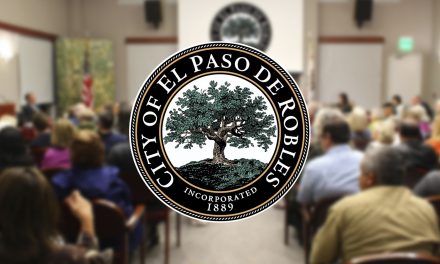Paso Robles has its coveted southern Gateway Project. The City Council paved the way for the Paso Robles Gateway Project Tuesday night, June 16, with nine separate 5-0 votes — seven resolutions and two ordinances.
Council also unanimously approved the 2020-21 budget without any significant reductions to services such as police and fire due to a drop in revenue from COVID-19 restrictions.
The major Gateway piece voted on Tuesday night was the annexation of 170-plus acres into the City of Paso Robles for the development of two hotel-resorts with 325 rooms, three commercial centers total 73,600 leasable square feet, 17 workforce apartment units, up to 80 attached single-family residential resort units or a third hotel with 100 rooms, and approximately 98-plus acres of agriculture and open space areas.
The three proposed commercial areas would include commercial, office, retail, and restaurant space. The Village Commercial Center would include 17 workforce apartment units.
The land for the project proposed by Quorum Realty Fund IV is at the northwest corner of the Highway 46 West and Highway 101 interchange. The plan calls for a five-star resort to sit roughly a mile back from the highways. Nearly 100 acres of open space will be between the resort and the commercial centers and the single-family homes, some of which will also be short-term rentals.
Everyone on the council was impressed with the applicant’s thoroughness.
“Overall, this is actually one of the nicest projects we’ve ever had presented to us,” said Councilmember Fred Strong. “I find it difficult to say no to something that has been done this well.”
Councilmember Steve Gregory said bringing a five-star resort was the next step in the evolution of Paso Robles as a premier tourist destination.
“I agree this is an incredible project and an incredible opportunity for our community,” Gregory said. “We have a very large shortage for a five-star resort project like this in our community and it will bring in millions of dollars toward the TOT tax (transient occupancy tax) revenues for the city.”
The project will also, according to the City, the applicant and the council, provide a solution to the traffic problems at the intersection of the highways.
The project requires reconfiguration of the South Vine Street State Route 46 West intersection, westward to realign with the Theatre Drive and State Route 46 signal. South Vine Street will be relocated within and adjacent to the project site.
The realignment of South Vine Street is only one part of the U.S. 101/SR 46 W interchange improvement project. Part 1, which included the relocation of Theater Drive west of the original intersection location, has been completed. Part 2 consists of the realignment of South Vine Street to align with the new Theater Drive intersection. And Part 3 includes converting the existing compact diamond, signal-controlled ramp intersections into roundabouts.
Quorum Realty will be paying for some of the Vine Street realignment. The City is expected to be working with Caltrans and San Luis Obispo County on the interchange. Councilmember Strong said considering the importance of the intersection that grant funding would likely be available to cover much of the costs.
Water was also a concern, and city staff explained that there would be enough water at full build-out and that the applicant mitigated this further by reducing the amount of water it would need. This project has been on the City’s radar for years and was part of the City’s long-term planning.
There is still much work to be done before breaking ground, such as realignment of South Vine Street. The project also needs approval from San Luis Obispo County’s Local Agency Formation Commission.
LAFCOs are state-mandated local governmental agencies responsible for making decisions regarding proposals for incorporating cities, forming special districts, and determining spheres of influence, considering annexations and other actions under the Cortese-Knox-Hertzberg Act.
The other major part of the more than five hours of the City Council meeting was approving the budget for 2020-21. Due to the revenue loss from COVID-19 stay-home orders, the City needed to close a projected $13 million gap in the budget.
The City covered this by using $6 million of its $18 million reserve. To close the remainder, the city staff proposed reductions in services such as eliminating the aquatics program.
The bulk of the remaining $7 million shortfall would come from its list of capital improvement projects, totaling $4.4 million, such as not paying $2.6 million for the homeless warming shelter and $590,000 for Downtown parking lot improvements.
Also on the chopping block was funding for three partner agencies — Paso Robles Downtown Main Street Association, the Paso Robles Chamber of Commerce, and the Paso Robles Wine Country Alliance. City staff proposed cutting their funding in half, but the council countered with keeping them at their current funding level for the next six months and then reevaluating. The council clearly stated they would like to see these groups work toward not relying on this funding.
Part of the budget approval included not renewing a contract for economic development with the Paso Robles Chamber of Commerce. The three-year contract expires at the end of June. City staff said they could bring this inhouse.
The next City Council meeting is scheduled for July 7. Meetings will continue via teleconference and live-streamed per state COVID-19 guidelines. For more information, visit prcity.com.














